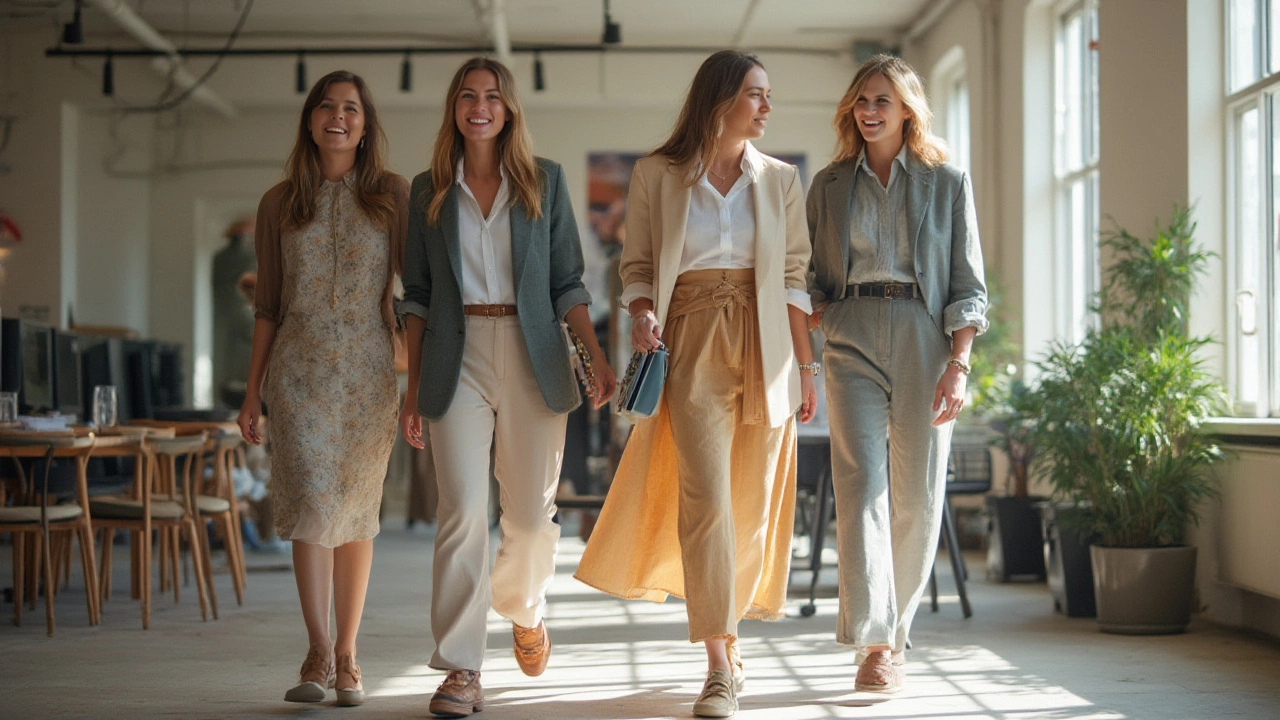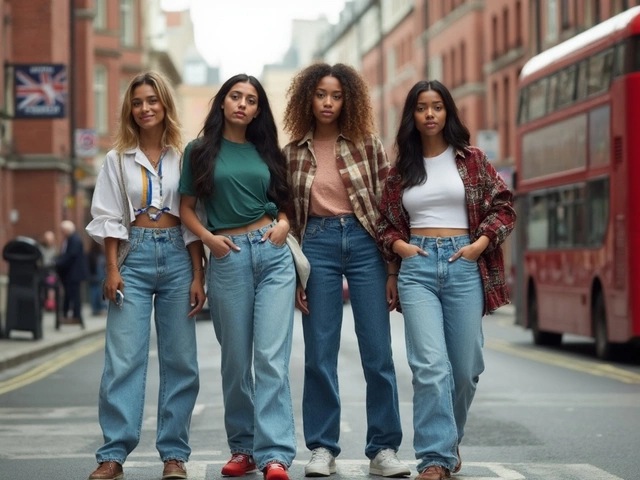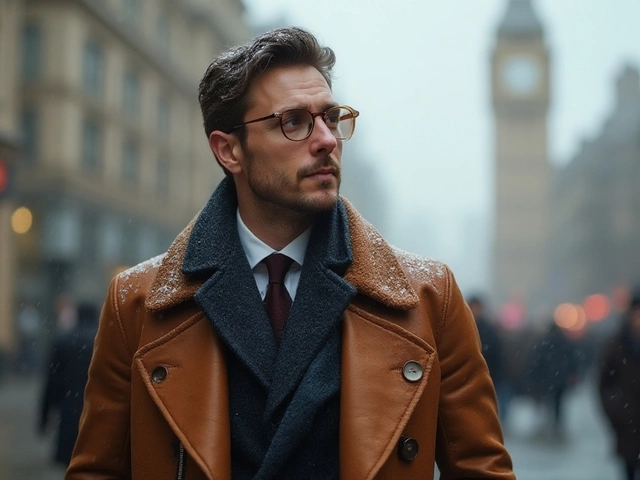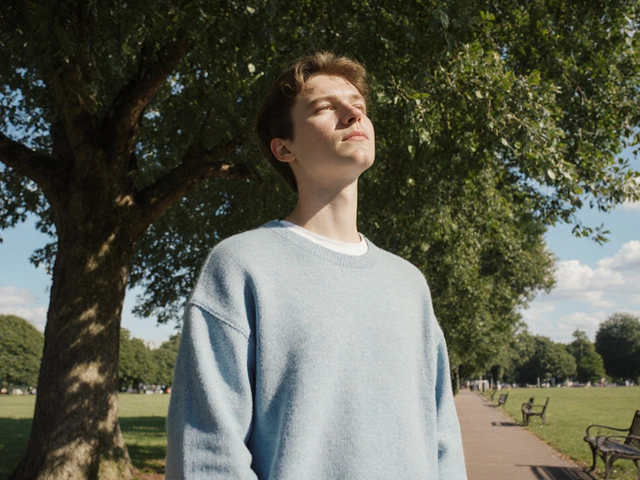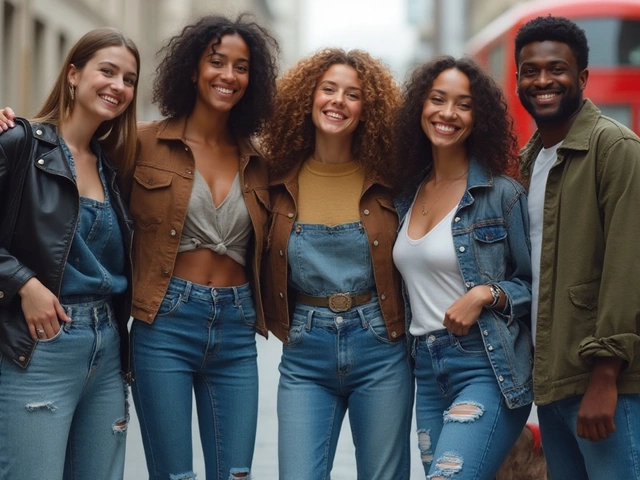You’d think summer would be all shorts and tank tops, but try pulling that off at work and see how far you get. Every year, offices crank up the AC while the world outside bakes, and everyone has to strike the impossible balance: look sharp, stay cool, and don’t melt under pressure. It’s a modern workplace dilemma: how do you look put-together when the thermostat outside is stuck at ‘swelter’? Spoiler—people aren’t showing up in seersucker three-piece suits. But the tricks professionals use to avoid heatstroke while keeping their bosses happy? They’re a lot more strategic than many realize.
The Summer Style Playbook: Essentials Everyone Swears By
Every office has that one guy who looks like he glides through the heat without breaking a sweat—literally and sartorially. The secret? It’s about picking the right fabrics, colors, and layers, not just cutting off your sleeves. Natural fabrics are absolute life-savers. Cotton, linen, even lightweight merino wool—these are top picks because they breathe, wick moisture, and don’t stick to your skin like synthetic blends. A study by the Textile Research Journal even showed that pure linen allows up to 50% more air flow than poly-cotton shirt blends, which explains why those crisp white linen shirts have a cult following every July.
Colors matter way more in summer than most people realize. Dark colors absorb heat—nothing like turning your shirt into a microwave plate around noon. Whites, light blue, pale grays, beige: you’ll find these shades filling office wardrobes everywhere from Tokyo to Toronto. There’s actually a practical reason—lighter shades reflect sunlight, keeping you cooler from the outside in.
Layering doesn’t get tossed out the window, either. No one wants to freeze through an afternoon meeting because the building manager set the AC to ‘arctic blast.’ Light, unlined blazers—especially in silk blend or airy linen—let you stay formal without feeling wrapped in insulation. And the famous Oxford shirt? Its button-down collar and open weave make it a summer workhorse, easily paired with or without a blazer.
Pants get a big seasonal rethink too. While shorts rarely pass the dress code (unless you work at a startup where anything goes), professionals switch from heavy wool to lightweight chino or linen trousers. Brands now even offer “tropical wool”—a suiting fabric woven so thin that it lets air pass through but stays formal enough for the Monday boardroom. Cropped lengths or ankle-baring styles have crept into the scene, giving a little more breeze without crossing into ‘too casual’ territory.
Dresses and skirts are summer saviors for a reason. Knee-length or midi styles in loose fits allow air to circulate and look just as professional as trousers. Wrap dresses, straight-cut skirts, and shirt dresses come up again and again among HR managers for their mix of polish and practicality. Some companies now even encourage ‘summer dress codes’ from June to September, relaxing rules a notch so employees don’t wilt by noon.
Accessories work overtime this time of year. A lightweight silk scarf or tie for men, thin leather belts, and subtle jewelry keep things fresh without feeling heavy or sticky. Footwear gets a seasonal update too, with breathable leather loafers, d’Orsay flats, or low-block heels. Barefoot or flip-flops are a hard no in almost every office, but ‘no-show’ socks with loafers are a summer hack many professionals swear by.
How Companies Adapt Office Fashion in Summer
Here’s a little-known fact: big companies often drop their dress codes or tweak them for a few months when the temperature spikes. You might be surprised how many major law firms now run a “business casual summer” pilot each year. That means tailored polos, open-collar shirts, and even nice jeans sneak into the rotation on certain days. But the golden rule: even if the rules get looser, you can’t show up looking like you’re headed to the beach.
For years, employees at places like Google and Apple have worn shorts, graphic tees, and even sandals as standard summer fare, but they’re famous for quirky office culture. In more traditional workplaces—think finance, consulting, or law—there’s a subtle art to dressing down. Professionals swap full suits for mix-and-match separates: unstructured blazers with chinos, or sheath dresses with light cardigans instead of jackets. Some HR departments even hand out “heat advisories” guiding what’s cool (literally and figuratively) from June to August.
The pandemic flip-flopped office fashion in ways people didn’t expect. Remote work showed bosses worldwide that you can still get things done in short sleeves and comfortable pants, as long as you look presentable on camera. Now, with hybrid work in place, a lot of companies have kept that relaxed summer attitude going, especially when workers are commuting through city heatwaves. It’s become way more common to see untucked shirts, lighter shoes, and even tasteful sneakers at the office—so long as they’re clean.
Retailers and designers have chased this seasonal shift. Brands like Uniqlo and Bonobos now market “summer work collections” with pieces that are wrinkle-resistant and cooling to the touch. Some even use new tech fabrics: think shirts that release heat instead of trapping it, or pants that wick away moisture. In 2022, a report from the American Apparel & Footwear Association noted that sales of performance dress shirts and ‘office sneakers’ shot up by over 30% during the summer months, showing just how much people want comfort that still looks business-ready.
Forward-thinking managers have also started ‘no tie’ or ‘no jacket’ Fridays during summer, giving the team a little breathing room—literally. If you see colleagues keeping a blazer at their desk but wearing airy shirts most of the day, it’s not sloppiness; it’s survival. And there’s an unspoken wisdom: always look one notch more formal than the least formal person in the room. That tactical dressing keeps you out of trouble with dress code sticklers while letting you enjoy the perks of breathable summer fashion.
Finally, there’s the silent hero: the undershirt. Heat-busting, sweat-wicking, and invisible under office outfits, it saves plenty of professionals from awkward damp patches during presentations or subway rides. The smoothest operators often buy undershirts made from bamboo or modal blends, which stay cool and dry way better than basic cotton. This behind-the-scenes move helps you keep your cool—no matter what the thermostat says.

Common Pitfalls and How to Avoid Looking Sweaty, Sloppy, or Unprofessional
It seems easy enough—just wear less clothing, right? Except, most slip-ups in summer office wear happen when people cross the fine line between “relaxed” and “just rolled out of bed.” The biggest summer no-gos? Anything wrinkled, see-through, or too tight. Humidity exposes every crease and sweat patch, and synthetic fabrics can make you feel (and look) like a hot mess by noon. Professionals dodge this by choosing wrinkle-resistant blends and keeping a portable steamer or wrinkle-release spray handy.
Shirts and dresses shouldn’t cling. If you have to peel anything off your skin at 3 p.m., it’s too fitted for an office summer. Aim for styles that graze—never squeeze—your body, and embrace pleated details or boxier silhouettes that leave some room to breathe. For men, going collarless looks casual, but beware: not every snap-button or Henley passes muster. Go for polos or classic button-downs left open at the neck—bonus points for those with subtle, professional prints.
One pitfall everyone’s bumped into: sweat stains. Don’t just hope for the best—pick colors and fabrics that hide sweat marks, like patterned shirts or mid-tone shades. Some companies sell undershirts designed just to block underarm stains, and they’re worth it if your office turns muggy by ten a.m. Using dress shields or sweat-blocking pads for big meetings can also save you a lot of embarrassment.
When it comes to pants or skirts, steer clear of anything so light it turns see-through in sunlight. Well-lined trousers or thicker skirts (even in pale colors) are best, especially if your office uses strong overhead lighting that can make fabric transparency worse. Check in natural light at home—never trust just your bedroom mirror.
Shoes seem straightforward, but sandal temptation is real—especially during city heatwaves. Professionals get around this by wearing loafers or pumps without socks (with odor-blocking insoles or footies), giving that airy feel without showing toes. Espadrilles, while trendy, can look sloppy unless they’re clean and paired right. If you can, invest in a second, more breathable pair of business-appropriate shoes, and rotate them—never wear the same sweaty shoes two days running. You’ll avoid both foot odor and shoe breakdown.
Final common mistake: skipping the deodorant or not letting it dry before dressing. White marks or wet spots can ruin the best outfit. Many professionals keep deodorant wipes and travel-sized antiperspirant in their drawer or bag. And if you commute by bike or on foot, a fresh shirt stashed at the office could be a lifesaver.
Building a Summer Office Wardrobe: Real-Life Strategies
Let’s get practical. Want to master summer professional attire? Start by auditing your current closet. Make a pile of anything too heavy, poorly ventilated, or dark—move it aside for now. Focus on adding a handful of season-proof essentials. For men, that’s two to three light-colored cotton or linen button-down shirts, a couple of polos, one or two pairs of beige or navy chinos, and a single, unstructured blazer that works with all your bottoms. Swap in performance fabric socks and go for loafers over lace-ups when you can.
Women can’t go wrong with three to four breezy dresses (think wrap or A-line, knee or midi length), a couple of linen-blend blouses, wide-leg trousers, and a light cardigan. A pair of versatile flats and a pair of block-heel sandals round it out. Don’t forget a carry-along wrinkle-release spray and a compact lint roller—city living isn’t kind on light summer fabrics.
If you work in a place with a strict dress code, try building a ‘work uniform’ for summer. That might be the same well-fitting navy dress or charcoal chinos rotated three times a week, accessorized differently. The goal isn’t to reinvent the wheel every day; it’s to nail a formula that feels smart in the heat. Choose clothes that can be mixed and matched without much thought, saving your brainpower for actual work (not crisis-laundering a sweat-stained shirt at lunchtime).
You may notice a late-summer trend: creative professionals adding a pop of color or unique accessory to break the sea of navy and beige. A pair of fun socks, a colorful necklace, or a light patterned scarf can bridge the gap between keeping cool and keeping your style personal.
Don’t be afraid of tailoring. Off-the-rack trousers or skirts are often too heavy or poorly lined for sweltering offices. A good tailor can hem pants to a cooler ankle length or replace synthetic linings with something more breathable, giving you comfort for years to come. And if you’re truly in a no-AC zone, invest in a portable fan and the miracle of cooling body spray—anything to get you through that 3 p.m. conference call without looking like you’ve run a marathon.
Bosses notice who makes an effort, even if summer fashion feels a little more relaxed. By sticking to breathable fabrics, subtle layers, and just the right dose of color, you can keep your cool, literally and figuratively—and avoid any awkward talks about office attire. If there’s a common thread among professionals who dress well in the heat, it’s that they plan ahead, use a handful of seasonal hacks, and always have a backup for when the AC fails or the sky opens up. Turns out, outsmarting summer’s about more than surviving—it’s about setting your own pace, no matter the temperature out there.
